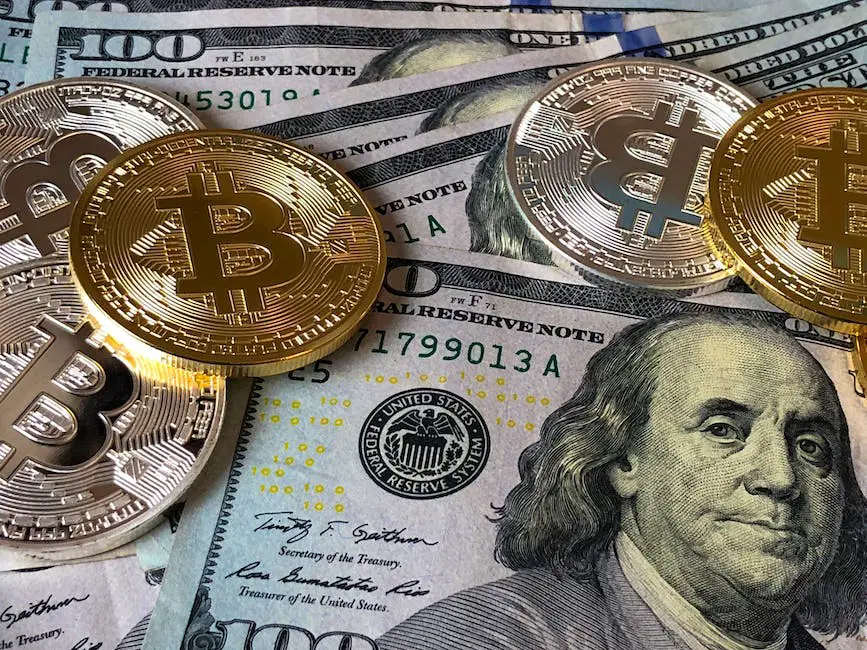Exploring Cross-Border Payments: A Guide
In today’s increasingly interconnected and globalized world, cross-border payments play a vital role in the smooth functioning of the international economy. As technology advances and new payment methods emerge, understanding the types, challenges, risks, and innovations associated with cross-border payments becomes increasingly important for individuals and businesses alike. This knowledge enables us to navigate our way through the complex landscape of international transactions, regulations, and compliance issues, ensuring that we can take advantage of the opportunities that these new developments bring while reducing potential risks. Step with us through an exploration that dives into the depths of cross-border payments, uncovering the various methods and technologies available, while also addressing the challenges, regulations, and future prospects of this essential financial tool.
Types and Methods of Cross-Border Payments
Cross-Border Payments
Cross-border payments refer to the transactions between individuals or businesses residing in different countries. They are essential for trade and global economic growth, as they enable the movement of money across international borders. Over the years, the methods and channels for facilitating these transactions have evolved, leading to the emergence of various types and methods of cross-border payments. This article will delve into some of these payment methods, including bank transfers, money services businesses (MSBs), mobile payments, and digital currencies such as cryptocurrencies.
Bank Transfers
Bank transfers are among the most traditional and widely used methods for cross-border payments. They involve transferring funds from one bank account to another, using a network of correspondent banks that hold accounts with each other to facilitate the movement of money. Banks typically rely on the Society for Worldwide Interbank Financial Telecommunication (SWIFT) messaging system to securely exchange transaction information and settle payments.
There are two main types of cross-border bank transfers: wire transfers and Automated Clearing House (ACH) transfers. Wire transfers are a faster but more expensive option, as they involve the direct electronic transfer of funds between banks. ACH transfers, on the other hand, are processed in batches and usually take longer to settle, but they tend to be cheaper than wire transfers.
Money Services Businesses (MSBs)
Money Service Businesses (MSBs) offer an alternative to traditional banking services for cross-border payments. They provide various money transfer services, including remittances, foreign exchange, and payment processing. Examples of MSBs include Western Union and MoneyGram, which allow individuals to send and receive money internationally with or without a bank account.
MSBs can offer faster services and competitive exchange rates compared to banks, especially for remittances. However, their fees can sometimes be higher, and they are subject to strict regulatory requirements to curb money laundering and terrorist financing risks.
Mobile Payments
Mobile payments have become increasingly popular as a convenient and accessible method for cross-border transactions. These payments can be facilitated through mobile wallets, mobile banking apps, or dedicated international money transfer apps. Mobile payment providers, such as TransferWise, Remitly, and WorldRemit, enable users to send money across borders through their smartphones, often with lower fees and better exchange rates compared to traditional channels.
In addition to these dedicated payment platforms, mobile network operators, such as Safaricom’s M-Pesa in Kenya, have also launched cross-border payment services, allowing users to send and receive money across neighboring countries using their mobile phones.
Digital Currencies (Cryptocurrencies)
Digital currencies, particularly cryptocurrencies like Bitcoin and Ethereum, have emerged as a new frontier in cross-border payments. These decentralized digital assets operate on blockchain technology, which provides a secure and transparent ledger for recording transactions.
Cryptocurrencies have the potential to revolutionize cross-border payments by offering faster, cheaper, and more secure transactions compared to traditional methods. They eliminate the need for intermediary banks and allow for direct peer-to-peer transfers, reducing fees and processing times.
However, the widespread adoption of cryptocurrencies for cross-border payments faces several challenges, including regulatory concerns, market volatility, and limited acceptance among businesses and users. Nevertheless, several innovative companies are exploring this space and developing cross-border payment solutions based on digital currencies, such as Ripple and Stellar.
Introduction
Globalization and technological advancements have led to a significant evolution in the landscape of cross-border payments. These developments have increased interconnectedness between countries and their economies, resulting in individuals and businesses being able to choose from various options for transferring funds internationally. Depending on factors such as speed, cost, convenience, and security, each method presents its own set of advantages and disadvantages. As technology continues to advance, it is expected that new and innovative payment solutions will emerge, further transforming the cross-border payment landscape.

Challenges and Risks in Cross-Border Payments
Challenges and Opportunities in Cross-Border Payments
Due to the growing demand for international transactions, cross-border payments have become increasingly common. However, these transactions come with various challenges and risks that businesses and individuals must consider. Some of the hurdles include fluctuating currency exchange rates, difficulty navigating regulatory compliance, high transaction costs, and the risks of fraud and money laundering. Meanwhile, the ever-evolving technology provides an opportunity for new and user-friendly solutions to address these concerns, resulting in a more streamlined and efficient process for cross-border payments.
Currency Exchange Rates
One of the primary challenges associated with cross-border payments is the fluctuation in currency exchange rates. Since different countries use different currencies, international transactions invariably involve the exchange of one currency for another. The value of these currencies can change dramatically over time. This can create uncertainty for both senders and recipients of cross-border payments, as it can be difficult to predict the exact amount of money that will be received after the currency exchange takes place. Exchange rate volatility can also result in unexpected gains or losses for businesses, and in extreme cases, can threaten their financial stability.
Regulatory Compliance
Another significant challenge in cross-border payments is navigating the complex web of regulatory requirements that differ between countries. Each country has its own set of laws and regulations governing financial transactions. Handling cross-border payments involves understanding and adhering to the rules and regulations of multiple jurisdictions. Failure to comply with these regulations can result in costly fines, penalties, or even the suspension of operations by regulatory authorities.
Transaction Costs
High transaction costs are another challenge associated with cross-border payments. Due to the added complexity involved in transferring money between jurisdictions, financial institutions often charge substantial fees for processing these transactions. Additionally, intermediary banks that facilitate the transfer of funds between countries may also impose their own fees, which can further increase the overall cost of cross-border payments.
These fees can be particularly burdensome for individual consumers sending remittances back to their families, as even small amounts can be subject to disproportionate fees.
Fraud and Money Laundering Risks
Cross-border payments present heightened risks associated with fraud and money laundering. The inherent complexity of these transactions, combined with the need to navigate multiple jurisdictions with varying regulatory frameworks, creates an environment in which bad actors have opportunities to exploit weaknesses in the system for illicit purposes. Financial institutions that handle cross-border payments must be particularly vigilant in detecting and preventing fraudulent transactions or activities that facilitate money laundering. This can involve implementing robust due diligence processes, extensive monitoring and reporting protocols, and ensuring compliance with the AML and KYC regulations of the various jurisdictions in which they operate.
Introduction to Cross-Border Payments
Cross-border payments are a vital component of today’s interconnected global economy, allowing individuals and businesses to conduct international transactions. As technology and regulatory frameworks continue to evolve, the challenges and risks associated with cross-border payments demand careful consideration and attention. This article delves into technological advancements and the development of innovative payment solutions that have significantly transformed this landscape, ultimately aiming to make cross-border transactions more efficient and secure.

Technological Advancements and Innovations
Technological Innovations in Cross-Border Payments
In recent years, the growth of technology has greatly impacted the cross-border payment industry as demand for fast, secure, and low-cost money transfers has increased. Traditional financial institutions and emerging fintech companies alike have employed cutting-edge technologies to create innovative cross-border payment solutions. Key technological innovations, such as blockchain, real-time settlement systems, and advancements in mobile and digital payment solutions, have dramatically shaped the industry. The following sections will explore these innovations and their role in improving the cross-border payment experience for all parties involved.
Blockchain & Distributed Ledger Technology
Blockchain, the underlying technology behind cryptocurrencies like Bitcoin, has garnered considerable attention for its potential to disrupt and revolutionize cross-border payments. Powered by distributed ledger technology (DLT), blockchain enables multiple parties to maintain a decentralized, transparent, and secure record of transactions, offering a faster and more cost-effective alternative to traditional cross-border payment methods.
Several financial institutions and fintech companies have experimented with blockchain-based solutions for cross-border payments. Ripple, a prominent blockchain solutions provider, has developed a real-time gross settlement (RTGS) system called RippleNet, which facilitates instant international transfers, currency exchange, and settlement. Today, an increasing number of banks and payment providers are adopting Ripple’s technology to improve their cross-border payment capabilities.
Real-Time Settlement Systems
Real-time settlement systems have emerged as another critical innovation in cross-border payments, with numerous countries implementing real-time payment infrastructures at the domestic level. Real-time payment platforms, such as the UK’s Faster Payments Service (FPS) and the US’s The Clearing House (TCH) Real-Time Payments (RTP) system, have enabled instant, 24/7, and secure money transfers within their respective countries.
Recognizing the need for a similar infrastructure at the international level, some institutions and initiatives have started working on real-time settlement systems for cross-border transactions. SWIFT, the global financial messaging network, introduced its Global Payments Innovation (GPI) service in 2017, which significantly reduces the time and cost of cross-border transfers. SWIFT GPI’s vision is to support instant and frictionless international payments in the future, paving the way for a real-time cross-border settlement system.
Mobile & Digital Payment Solutions
The rapid adoption of smartphones and the internet has transformed the way people transact, necessitating the creation of advanced mobile and digital payment solutions. Mobile wallets, such as PayPal, Venmo, and Alipay, allow users to make payments, send money, and shop online using their smartphones, and have experienced a surge in popularity over recent years.
Recently, these mobile wallets have started to venture into the cross-border payments space. Remittance companies like Western Union and MoneyGram have incorporated mobile payments into their service offerings, enabling diaspora communities to send money to their home countries directly from their smartphones, at a fraction of the cost and time associated with traditional methods. In addition, cross-border digital payment services like TransferWise and WorldRemit have emerged, offering cost-effective and transparent international money transfers through their platforms.
Introduction to Cross-border Payments
In the ever-growing global economy, cross-border payments play a crucial role, with international trade, e-commerce, and people working across national borders rapidly increasing the demand for safe, secure, and efficient payment methods. Thus, understanding the cross-border payment landscape and ensuring regulatory compliance is essential for both individuals and businesses alike.

Regulation and Compliance in Cross-Border Payments
Technological Innovations Impacting Cross-border Payments
Technological advancements in blockchain, real-time settlement systems, and mobile and digital payment solutions have significantly impacted the cross-border payments landscape. As these technologies continue to evolve and mature, they are poised to reshape the way we conduct international transactions, making them faster, more secure, and more cost-effective than ever before. Consequently, this leads to improved access to global markets, greater financial inclusion, and enhanced connectivity in the twenty-first century.
Regulatory Environment
Cross-border payments are subject to regulations in different countries, which aim to ensure the stability and integrity of the financial systems and prevent illicit activities. Some regulatory bodies that govern cross-border payments include Financial Action Task Force (FATF) and central banks. Regional regulations include the European Union’s Revised Payment Services Directive (PSD2) and the United States’ Dodd-Frank Act.
These regulations may impose various requirements on payment service providers, banks, and other financial institutions, such as licensing, reporting, and customer due diligence.
Anti-Money Laundering (AML) and Know Your Customer (KYC) Requirements
The risk of money laundering and terrorist financing are primary concerns for regulators in cross-border payment transactions. AML regulations help detect and prevent the use of the financial system for such purposes, and payment service providers and financial institutions are required to comply with them. This includes knowing their customers, monitoring suspicious activities, and reporting them to relevant authorities.
KYC requirements ensure that financial institutions have accurate information about their customers and can effectively monitor and report any unusual or suspicious activities, including name, address, date of birth, and identification documents.
Recent years have seen financial institutions and payment service providers adopt digital solutions to streamline their AML and KYC processes, such as electronic identity verification and data analytics tools.
Data Privacy and Protection
Payment transactions involve the exchange of sensitive personal and financial information, making protection crucial. Different jurisdictions may have varying data protection and privacy requirements, such as the European Union’s General Data Protection Regulation (GDPR).
To maintain compliance with data protection regulations and safeguard customer information, financial institutions and payment service providers need to invest in cutting-edge technology such as encryption and secure data storage solutions, as well as create a culture of privacy awareness and accountability among their employees.
Introduction
Cross-border payments are an essential aspect of the global economy, allowing businesses to expand their customer base and reach new markets. In an increasingly interconnected world, the ability to make seamless, secure, and cost-effective cross-border transactions is becoming more critical. However, navigating the complex and multifaceted regulations of such endeavors can be challenging, with numerous AML, KYC, and data protection requirements to consider.

The Future of Cross-Border Payments
The importance of compliance
Compliance with cross-border payment regulations is vital to minimize risks and ensure the integrity of the global financial system. By doing so, payment service providers, banks, and other stakeholders can contribute to fostering safer, more efficient, and transparent cross-border payments for the benefit of all involved parties. The future of cross-border payments is shaped by several key trends, opportunities, and challenges that will impact individuals and businesses alike, making it crucial to stay informed and adapt as needed.
Technological advancements
Technological innovations play a significant role in the development of cross-border payments. Blockchain, for example, has immense potential to revolutionize the way transactions are conducted, with cryptocurrencies and distributed ledgers providing increased efficiency, transparency, and security. Faster and cheaper payment processing can help smaller businesses enter the global market and facilitate the growth of e-commerce.
Tokenization and digital currencies
Tokenization has the potential to enhance the cross-border payment experience. By representing assets digitally, tokens can facilitate the transfer of funds and other assets more efficiently, reducing costs and the time taken to settle transactions. Digital currencies, like central bank digital currencies (CBDCs), as well as private stablecoins, have the potential to provide a quicker and cheaper alternative to traditional bank-based payments for cross-border transactions.
Regulatory environment
Regulation will play a significant role in shaping the future of cross-border payments. Governments and global regulators will need to adopt appropriate regulations to support the growing use of digital currencies and blockchain technology while at the same time ensuring adequate measures are in place to prevent financial crimes such as money laundering and terrorist financing. Collaborative initiatives like the G20’s financial reform agenda and the Financial Stability Board’s (FSB) roadmap for enhancing cross-border payments are essential in facilitating the development of coordinated regulatory frameworks.
Improvements in payment infrastructure
Upgrades to payment infrastructures are crucial for reducing friction and enhancing the user experience in cross-border transactions. One example is the growing adoption of the ISO 20022 messaging standard, which allows for greater data-sharing between banks and payment service providers, resulting in more effective processing and tracking of cross-border transactions. Additionally, the development of new payment corridors, like the Society for Worldwide Interbank Financial Telecommunication’s (SWIFT) Global Payments Initiative, can help to further streamline cross-border payments.
Fintech and innovative payment solutions
Fintech companies are at the forefront of innovation in cross-border payments, with many developing solutions that extend beyond traditional banking services. These innovative payment solutions, such as mobile wallets and payment platforms, serve to not only improve transaction speeds and reduce costs but also to provide greater financial inclusion by catering to customers who may not have access to traditional banking services.
The future of cross-border payments
The future of cross-border payments holds significant opportunities for businesses and individuals alike. Technological advancements, tokenization, digital currencies, regulatory developments, and improvements in payment infrastructures are all contributing to a more seamless and efficient cross-border payment experience. As the industry continues to evolve, it will be essential for stakeholders to adapt their business models, strategies, and systems to meet these new challenges and take full advantage of the opportunities offered by the changing landscape of cross-border payments.

The world of cross-border payments is rapidly evolving, driven by the exponential growth of technology, international trade, and the need for more efficient and secure methods of transferring funds across borders. As we continue to explore the innovations and advancements of this domain, it is crucial to keep in mind the challenges and risks associated with a constantly changing regulatory landscape. By staying informed and adapting to these changes, both individuals and businesses can leverage the potential benefits of new payment solutions while ensuring compliance with ever-evolving regulatory requirements. The future of cross-border payments is informed not just by technological breakthroughs but also by our ability to manage associated risks, engage with regulatory frameworks, and embrace a globalized economy that thrives upon secure, efficient, and seamless financial transactions.
